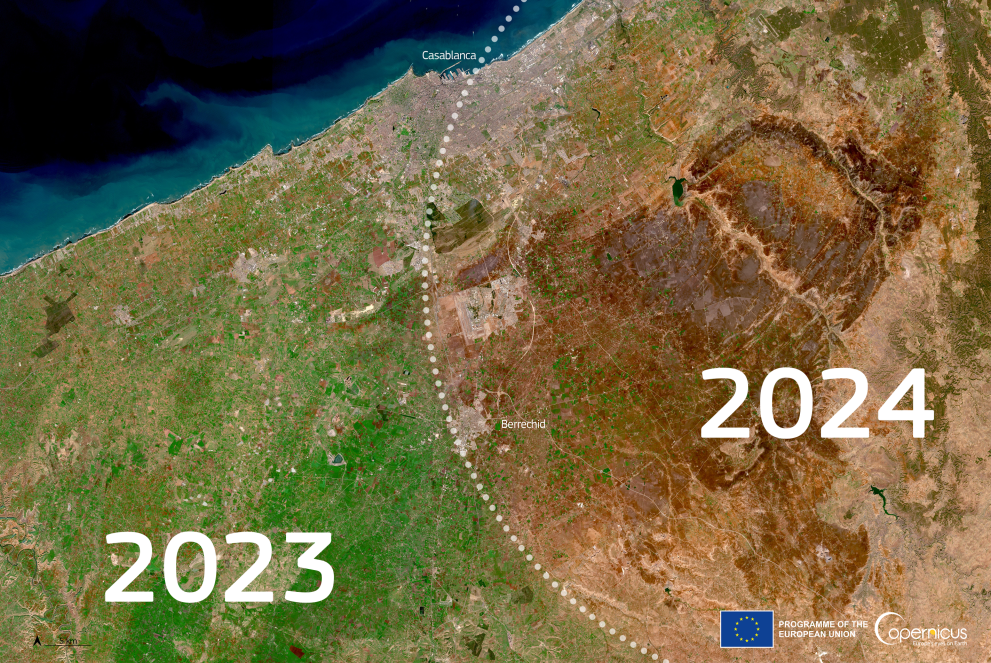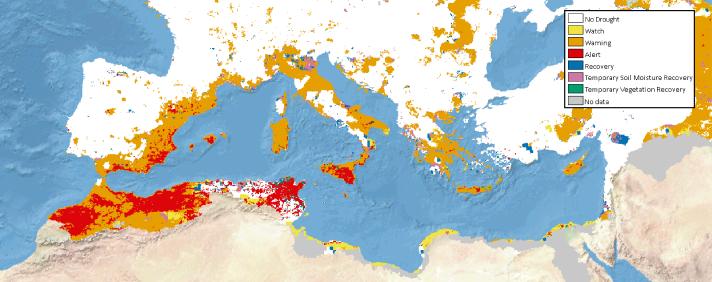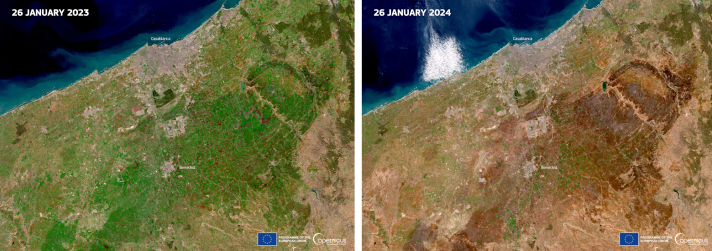
Today the Commission’s Joint Research Centre (JRC) publishes its report Drought in the Mediterranean – January 2024 on the persisting droughts and their impact across the wider region.
Long-lasting, above-average temperatures, warm spells and poor precipitation have led to severe drought conditions in the Mediterranean region, affecting numerous areas across southern Italy, southern Spain, Malta, Morocco, Algeria, and Tunisia. In the midst of winter, the ongoing drought is already having critical impacts, according to the report compiled by the JRC-run European Drought Observatory (EDO).
It also points to seasonal forecast predicting a warmer spring in southern Italy, Greece, the Mediterranean islands, and northern Africa. As the drought’s severity is expected to persist, concerns rise about its impacts on agriculture, ecosystems, drinking water availability and energy production.
The report shows the importance of climate mitigation – every tenth of a degree of global warming will increase the risks of prolonged droughts – as well as adaption measures for water management and for sectors depending on fresh water like agriculture and drinking water production in face of worsening impacts of global warming.
Record drought hits the Mediterranean region
From 1 to 20 January the Mediterranean region experienced critical drought conditions, particularly affecting southern Italy, southern Spain and Malta. The situation has even been more severe and prolonged in Morocco, Algeria and Tunisia.
As a consequence, water use restrictions have already been implemented in Morocco, Spain, and Sicily (Italy) in response to decreasing water availability.
On 1 February, drought emergency with strict water restrictions was declared in the Spanish region of Catalonia, as water reserves fell to below 16%. Water reservoirs in the southern Portugal region of Algarve were found to be at their lowest level and water use restrictions were ordered.
Reservoirs in Italy’s Sicily region are below the alert level and water rationing may be necessary to guarantee minimal services. In Sardinia, water reservoirs were estimated to hold less than 50% of their capacity in December 2023.
In Morocco, six consecutive years of drought have resulted in critically low level of water in reservoirs, with average dam filling at about 23%. Water use for cleaning roads, irrigation of parks and some farming areas has been banned.
Drought conditions and impact on agriculture
The researchers used the combined drought indicator (CDI) – based on precipitation, soil moisture, and vegetation stress – to assess agricultural drought. It estimates alert and warning conditions in many areas of the Mediterranean region. The analysis shows the situation was still alarming by the end of January.
Rain deficit and record-high temperatures in January 2024 affected winter crops and fruit trees along the coast in Spain, Italy, Greece, and the Mediterranean islands, while Morocco and Algeria saw a reduced crop growth, according to the latest JRC MARS bulletin.
Moreover, warm spells between September and December 2023 led to above-average temperatures, with January 2024 having been recently declared as the warmest January on record.
Drought forecasts to follow closely
Looking ahead, seasonal forecasts predict a warmer than average spring in 2024. The current lower-than-usual Alpine snowpack is expected to give a reduced snowmelt contribution to river flows in the region in the upcoming spring and summer seasons.
Prolonged droughts also increase the risk of wildfires due to reduced soil moisture, with the previous year - also marked by drought conditions in Europe - witnessing the largest wildfire ever recorded in the EU.
Need for adaptation and mitigation strategies
The UN's Intergovernmental Panel on Climate Change (IPCC) has predicted that heatwaves and droughts will become more frequent and severe in many regions in the coming decades. The Mediterranean basin is one of the few regions expected to experience a severe reduction in precipitation.
The situation is thus expected to continue to impact the region, highlighting the need for adaptation strategies to reduce the effects of the drought. Investments in drought early warning systems, increasing the water efficiency of existing and new technologies, changing to more drought resistant crops and improving access to water resources are crucial for improving community preparedness and resilience.
However, managing droughts is complex. A pragmatic approach to drought management and adaptation planning requires an impact-based risk assessment, which in turn should rely on drought impact observations. To this end, the JRC and European Drought Observatory for Resilience and Adaptation (EDORA) partners have collaborated on the development of the first European Drought Risk Atlas, aimed at assessing drought risk using innovative technologies.
Related content
Drought in the Mediterranean region - January 2024
European Drought Observatory’s drought dashboard for Europe
Current drought conditions in Europe
Details
- Publication date
- 20 February 2024
- Author
- Joint Research Centre
- JRC portfolios






